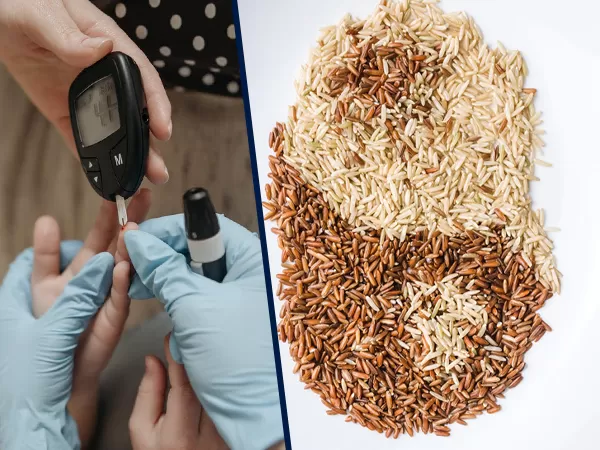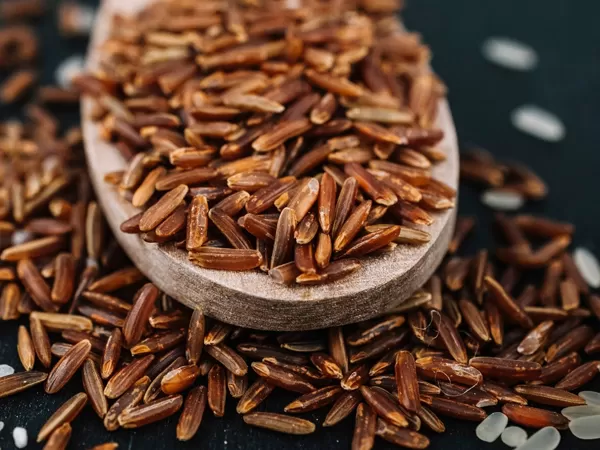Why is Rice for Diabetes Patients Good: a Brief Understanding
Eating rice for diabetes can be beneficial to lower blood sugar levels. High-carbohydrate foods, such as rice, can be a good option for people with diabetes. Eating rice can help people with diabetes to regulate their blood sugar levels.
According to the Hindu, a recent study found that eating rice, especially white rice, is linked to diabetes. This means that if you eat a lot of rice, you’re more likely to get diabetes. Rice is an important dietary staple for more than half of the world’s population, and this is particularly true in Asia.
The rice eaten by many Indians is South Indian, growing in significance alongside the population of India. Fortunately, the good news for people with diabetes is that you can add rice to your meal but you need to choose which type of rice you should go for.

What is the Ideal GI for Diabetes?
The Glycemic Index (GI) is a measure of how quickly a food causes a rise in blood sugar levels, and how long the elevation lasts. If a food has a GI of less than 55, it will be better for the diabetic because it does not cause a large increase in blood sugar levels. Determine whether to use low-GIs or high-GI with your doctor’s advice.
Nutrient Content in 1 Cup White Rice And Brown Rice
| Nutrient | Value White Rice (158g) | Value Brown Rice (196g) |
|---|---|---|
| Calories | 205 | 218 |
| Total Fat | 0.4g | 1.6g |
| Saturated Fat | 0.1g | 0.3g |
| Polyunsaturated Fat | 0.1g | 0.6g |
| Monounsaturated Fat | 0.1g | 0.6g |
| Cholesterol | 0mg | 0mg |
| Sodium | 1.6mg | 2mg |
| Total Carbohydrates | 45g | 46g |
| Dietary Fiber | 0.6g | 3.6g |
| Sugars | 0.1g | – |
| Protein | 4.3g | 4.6g |
| Vitamin D | 0mcg | 0mcg |
| Calcium | 16mg | 19.6mg |
| Iron | 1.9mg | 1mg |
| Potassium | 55.3mg | 154.1mg |
Source (nutritionix.com White Rice And Brown Rice)
Brown rice for diabetes: Is it a good choice or a bad choice?
Each serving of brown rice contains three times as much fiber and more than twice as many micronutrients as white rice. Brown rice has cancer-fighting antioxidants that promote wellness. Compared to white rice, brown rice is much healthier. The fiber and micronutrients in brown rice help you fight cancer and promote wellness.

Difference between Brown rice and White rice for diabetes!
People with Type 1 or Type 2 diabetes may want to eat a high-quality meal that includes healthy carbs with good ingredients. Eating white rice increases your risk of developing type 2 diabetes and replacing rice with brown rice may help to reduce that risk.
Some studies show that white rice raises blood sugar levels to a greater extent than brown rice. The scientists analyzed 39,765 men and 157,463 women in three large studies. They found that white rice has a higher glycemic index than brown rice. Researchers believe that refining white rice unleashes the glycemic index, altering its botanical structure.
The refining process also causes other consequences such as fiber loss, vitamin depletion, and mineral loss. The researchers recommend eating brown rice over white rice because it does not generate a fast increase in blood sugar levels.
Nutritional value of Brown Rice for Diabetes Oregon State University says that brown rice has a medium glycemic load of 16. One half-cup serving has 39 grams of carbohydrates, many of which are magnesium, with 60 milligrams, or 14% of the daily value per serving. Magnesium is important for regulating muscle and nerve function, blood pressure, and blood sugar levels. The National Institutes of Health also says that niacin helps keep the nervous system, digestive system, and skin healthy.

Brown rice for diabetes vs chapati for diabetes: Is roti a good alternative?
Chapati can be made with a range of different ingredients. The glycemic index for chapati is complicated because the dish can be prepared with a wide variety of different ingredients. Ingredients such as salt, water, and flour can impact the nutritional value of this food. You can make atta from more than just grains.
What is Red rice? Are they helpful in diabetes?
Rice is a food grain that can be available in both white and red. Red rice has anthocyanin and it is consumed either partially hulled or unhulled. It contains red husk and is very nutritious. Red rice is a nutrient-rich, gluten-free whole grain. You can cook red rice with meat and other veggies for a balanced meal.

Benefits of Red Rice for diabetes:
Red rice helps regulate insulin levels and is good for Type 1 or Type 2 diabetic patients. Its consumption can help with asthma and helps to regulate the oxygen throughout the whole body. Red rice has many health benefits and helps the digestive system to flush out toxins.
How to cook rice for diabetic patients?
You can eliminate the starch from rice by cooking it. If you want to make the rice more nutritious, you can consult a low-starch recipe. Starchless rice is perfect for people with diabetes. Follow the steps mentioned below and make rice that suits your Diabetes.
- Prepare a pot and boil a small amount of water, three times the amount of rice you wish to cook.
- Most cooking instructions will instruct to add salt or other spices, but this water should be boiled plain, without any additives.
- Add washed rice to the boiling water; when it begins to boil, let it cook for five to six minutes.
- You will see white buildups of starch on top as they cook; these are starch that has been released from the rice.
- When there’s about half of the water left in your pan, turn off the stove and let it sit for four minutes before removing it from the heat and draining off excess liquid from the pan with a strainer.
- Your starch-free rice is ready. You can eat the rice without any more added ingredients, but if you wanted to add some it would taste great with vegetables, dal, or curries.
The Final Takeaway:
Wild rice, brown rice, and quinoa are all excellent additions to a diet. All of these grains are gluten-free, which is convenient if you’re sensitive to gluten or just trying to cut back on eating it. And they’re also better for you than white rice because of their high fiber, protein, and nutrient content. And the best part of this is that they all taste good as well.







